
Montenegro is a small country of a bit over 600,000. It is bordered by Bosnia and Herzegovina (northwest), Serbia (northeast), Kosovo (east), Albania (southeast), and Croatia and the Adriatic Sea (about 300km) to the southwest.
Podgorica (Подгорица)
Podgorica is the country’s capital and its largest city with about a third (200,000) of the nations population. It is at the crossroads of several historically important routes, near six different rivers (Zeta, Morača, Cijevna, Ribnica, Sitnica and Mareza) close to the Adriatic Sea and on fertile lowlands with a favourable climate. With all of this going for it, as you can imagine, every man and his dog fought over control of the place over the centuries.
Our introduction was brief and a tad onerous. Firstly we came in at a bit after midnight to be greeted by 31 degrees after a 7 hour bus ride that was less than fun. Thankfully our hotel was only 250 meters away and had both cold beer and air conditioning. Also of benefit was that the list of things to see and do in Podgorica was pretty short. There was the Cathedral of the Resurrection of Christ, the Millennium Bridge and Independence square. And that was pretty much it.



So the next day it was 37 degrees and we were off again on what was to be a snappy 2 hour bus ride to the coastal town of Kotor. Sadly this too was an adventure.
After having a 100% full bus (so full in fact that the spotty-faced bus organiser had to stand), we then stopped along the way and picked up a further 8 local people.
They had to pay less than a quarter of what we had paid but being full they also had to stand. In the aisles thereby reducing airflow and adding more bodies, heat and odour to an already uncomfortable bus.
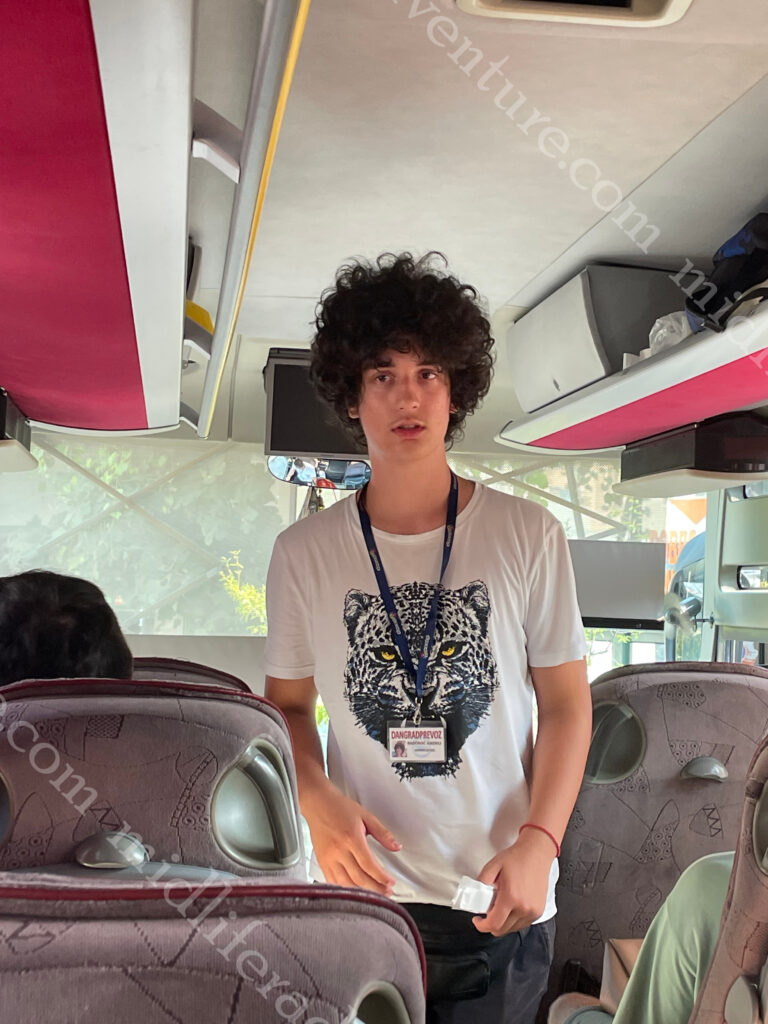
From here we then stopped a few times to pick up and drop off random parcels along the route. This included being parked on the side of the road for 10 minutes waiting for the recipient of one of the parcels to turn up because he was not where he should be. This period was accentuated by sardines for people sweating and dripping in the aisles and on the seats. So after about 50 minutes into our planned 2 hour ride we had travelled around 20 kilometres, in 37 degree heat, and then (go figure) the bus broke down.
At this point, all of the local interlopers who got on the bus and were standing went into rants at the bus driver (as if it was his fault) pushing him and yelling at him. In the meantime the spotty faced organiser (who was the only one who could speak English) ran and hid (imparting absolutely no knowledge of what was going on to the rest of us). After several phone calls by the bus driver we were all offloaded onto the side of the road.
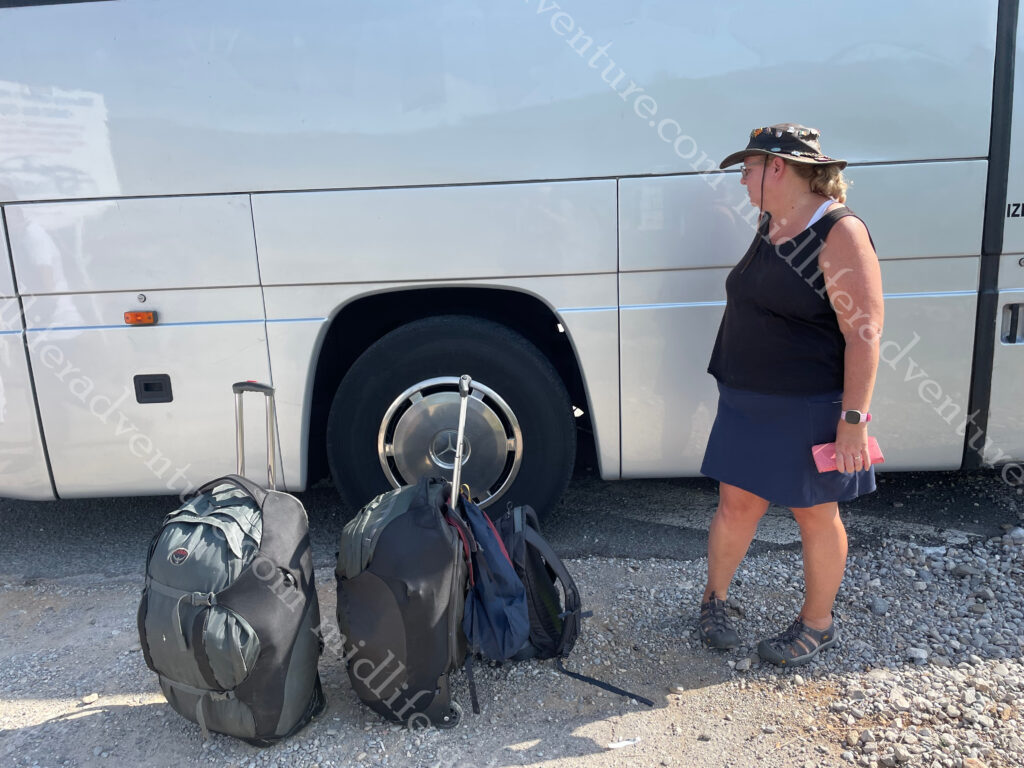
I eventually managed to get furry head (can you tell I am a fan) in a headlock who advised that more busses were on the way to pick us up.
Many of our fellow passengers got the shits and hailed down cars and negotiated lifts.
After about 40 minutes a half-full bus arrived and all of the interlopers (who didn’t have luggage) rushed to the bus taking all the available seats. Some people tried to jam their luggage underneath and then board but by then all the seats were taken by the interlopers and they had to climb under the bus and retrieve their bags. And the rest of us waited.
At least with the ones that scarpered and the interlopers gone, there may be room for us when the bus finally gets here. So after another 40 minutes and almost an hour and a half in the heat, with us sitting by the side of the road, with no shade, our replacement bus arrived and the rest ran swimmingly.
Kotor
After the drama above we found our accommodation (a unit on the 4th floor with no lift) stripped off our sweaty gear, did a load of washing and had well needed and welcome showers. Once the air conditioning did its thing we were ready to head out grab some dinner and see the town.
Kotor is a medieval fortified town that sits on Montenegro’s Adriatic coast with an incredibly pleasant looking harbour. The medieval Old Town of Kotor sits mostly at sea level, on a triangle of land bordered by the sea, a river, and a steep mountain on the third side. In many respects, it is similar to, but much smaller than, Dubrovnik. Something that I haven’t mentioned is that throughout much of this fires had been raging in Greece and the air was getting increasingly smoky and hazy. As Kotor is in a bit of a bowl between valleys the smoke got in but struggled to get out, as did the heat.



And this place is as touristy as all get out.
The main feature of Kotor is the fortified old town with three main entrance gates. The north gate or the River Gate (representing the symbol of beating back the Turkish fleet in the 16th century) was our first entry. As you head through the gates you find yourself in the main square of town facing directly at the Kotor Cathedral or the Cathedral of Saint Tryphon was built on the site of a previous church that was originally put in place in 809, however the current version dates to 1166. A series of earthquakes in the region have variously damaged it over the years.







It was late(ish), hot and we were of ill humour after the day that was, so we found a restaurant on the main square, ordered a cold beer and examined the menu. The prices in Touristville have certainly gone up on what we had been paying the last few weeks. But the food was good and sitting with the cool beer eased the tensions of the day.




On the evening walk home we took some night shots and crashed ready for the heat that was to follow tomorrow.




The next morning saw us entering the Old Town through the south or Gurdic gate. It was built in the 10th century and importantly, was the closest one to where we were staying. Heavily fortified with a wooden drawbridge and a moat (of sorts), it was a pretty cool way to enter the Old Town. The moat was actually the Gurdic Spring. The gate and bastion protect this vital connection to the rest of the world.



The bastion protects a wooden drawbridge with a heavily fortified passage. It was constructed in 1470 and was an essential part of the city’s defensive structure.
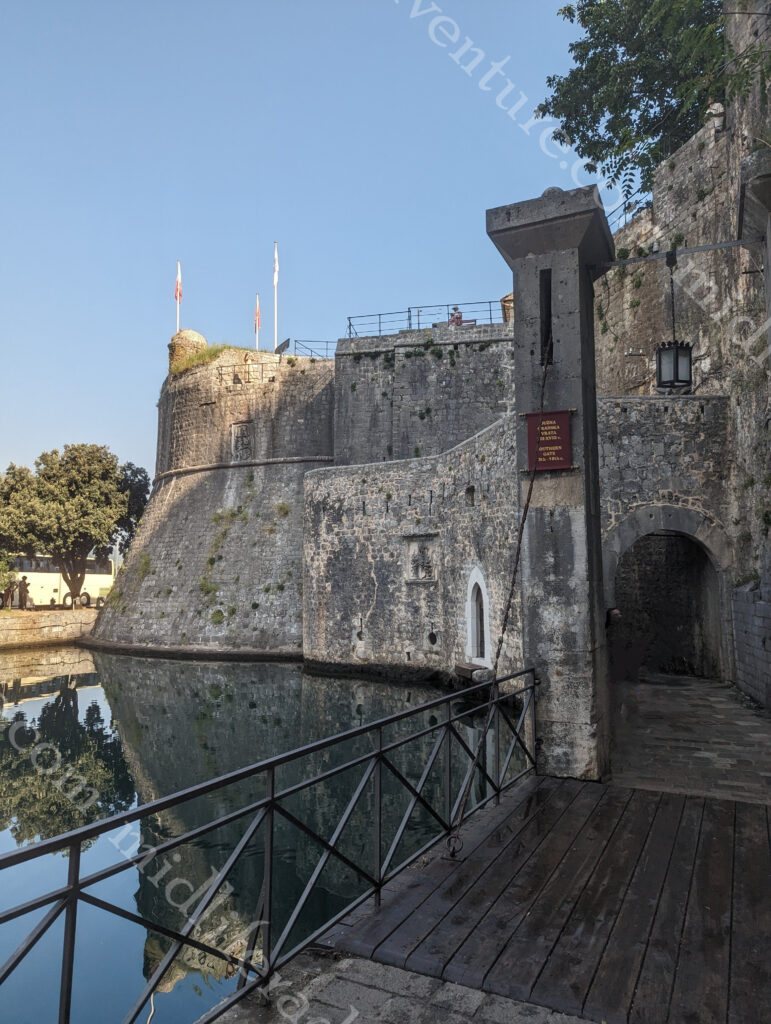
From here a set of stairs took you up onto the ramparts and gave you access to wandering along the ancient city walls. Which we took great pleasure in doing. When we climbed the stairs to the ramparts there was an Instagrammer getting photos on one of the outcrops. Having looked at everything and taken our photos they were still perched in the same spot, taking more shots. So Jill walked to the top of the outcrop (right next to her) and took her photos, this action created some very snooty faces.






While wandering the ramparts we hit the western Sea Gate, originating from 1555 (during the Venetian reign). From here we could see the masses of tour groups that were loading up ready to enter the Old Town area.
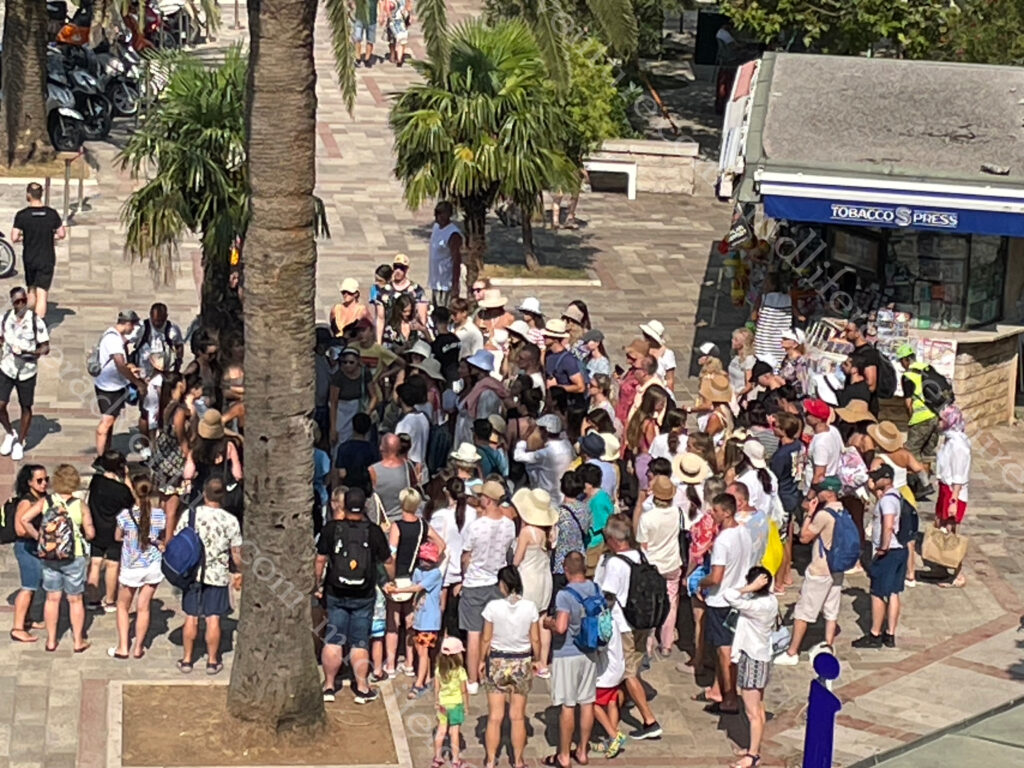
Having reached the end of the walls we descended the stairs and entered Old Town proper. It really is quite small and is probably only about 3-4 blocks deep before you hit the cliff face and the hike up to the fortress (more about that later). Once in you are greeted by the usual mix of shops cafe’s restaurants and old churches.











The unusual thing in Kotor is an unexplainable attraction to cats. There are hundreds of stray cats all over the place. They are very well looked after by locals and visitors, but they are everywhere. Add to this the abundance of cat stores celebrating their existence through merchandise and of course a cat museum.
The third gate is the quietest of the town’s gates is on the north side, along the Skurda River. A narrow stone bridge connects the gate with the other side of the river. It was built in 1540 in the Renaissance style leaving the main defence on that side as the moat-like river.




One of the biggest symbols of Kotor is the San Giovanni Fortress. It is situated high above the city walls of Kotor’s Old Town and has been perched up there since around the 6th century. During the peak season, you have to pay €8 per person to gain entry to the path.




This has at times been described as the “great wall of Kotor”. It is long (about 4.5 kilometres) and includes a climb of around 1400 stairs (each way) from the old town. Sitting 260 meters above sea level the fortress got its name from the old church that was on the top of the fortress. The wall thickness ranges from 2-12 meters.
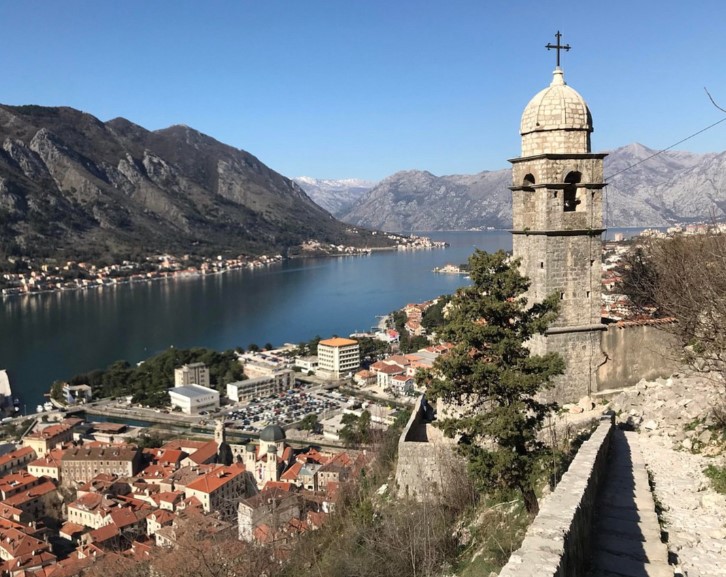
On the way to the fortress, the first stop is the church Our Lady of Health. The cult of Our Lady of Health relates to the plague epidemic that killed many people in the Middle Ages.
Cruise ship traffic has been steadily increasing with Kotor listed among the five most visited ports in the western Mediterranean last year.
The other ports included Dubrovnik, Rhodes, Mykonos and Venice.
Thankfully only mid-sized ships or smaller seem to be able to get in.

Budva
Budva was next, it is a small town of just under 20,000 on the Adriatic Sea. Set on the Budva Riviera it is the center of Montenegrin tourism and is known for its well-preserved medieval walled city, beaches and nightlife. The town itself is 2,500 years old, making it one of the oldest settlements on the Adriatic coast.

Located in the most prominent part of the Old Town, the Citadel was built in the 15th century. The old town includes the remains of St. Mary’s Church, terraced gates, several squares, and a building of the former army barracks.
The Greeks were the first to colonise the area in the 4th century BC when an Emporium was established on the site of Budva. In the 2nd century BC, the Romans took over. Then in the 6th century, it became part of the Byzantine Empire then the Slavs and Avars (850ish) had a crack. And then the Venetians had it for about 400 years.
The Old Town is tiny compared to those we have been to and anything that was once genuine has been replaced by tourist shops or boutique clothing stores. That said, the old buildings are ok and the people watching is very entertaining.



Once again Jill had fun with an Instagrammer. The blonde in the photo on the right had been standing on the stairs taking photos for at least 5 minutes while others patiently waited.
So Jill decided that she had had enough and went and stood behind her (for way longer than normal) ruining her shot. The woman glared and Jill cared not one bit.
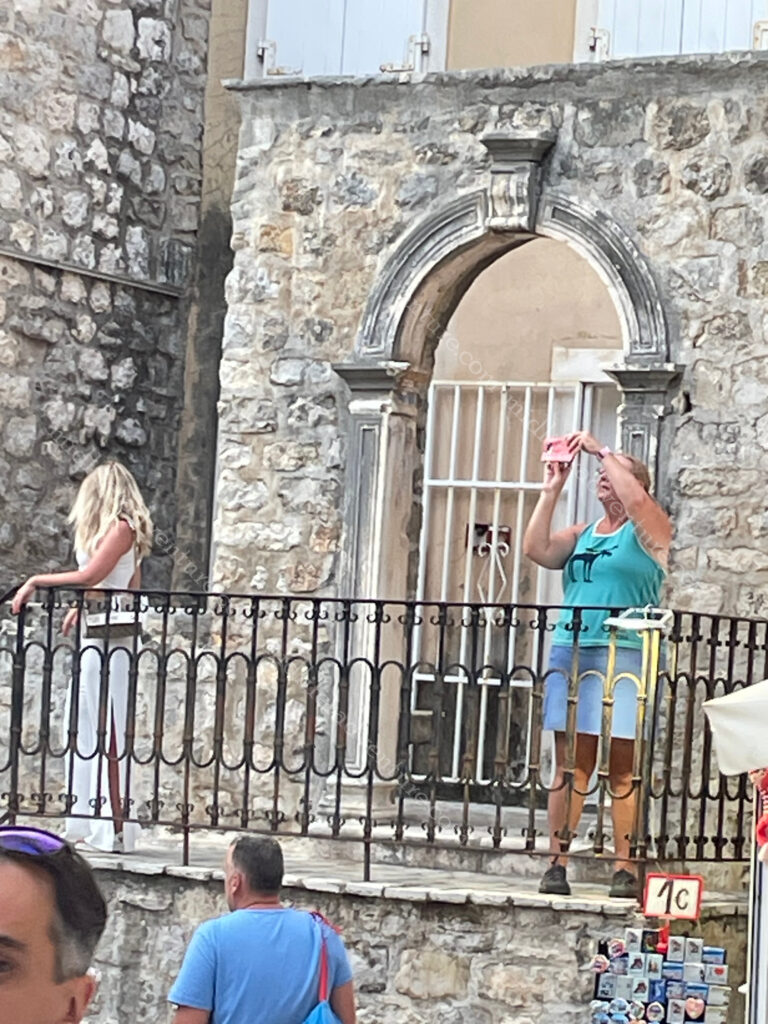
As you can probably tell, by now we have had enough of Instagrammers. Our issue is not with Instagrammers per se, it is the attitude that the rest of the world should change their actions to accommodate them. We are respectful and stay back allowing them to get their photographs. But if you are still standing and monopolising the same spot for an extended period, then you will get one or other of us standing in your way ruining your shot.
Anyway, back to Budva, the place is pretty small and it is virtually 100% set up for the tourist trade. It is trying hard to cash in on the tourism dollar and its proximity to Dubrovnik means that it is getting its fair share of day trippers.









The beaches are the type that Aussies hate, the ones where you have to pay to go on it. This inherently offends my sensibilities. The fact that you can be excluded from a public space just does not sit well with me. The prices for hiring a sunbed were exorbitant. And if you did pay the huge price, you could not bring your own food or drink onto the beach and were basically a captive to the big resorts. Oh, and there was very little sand, just the pebbles and rocks. And of course there were the Instagrammers.





The waterfront area was lovely, but again, it had been developed in a manner that was solely for the tourists. It was full of boats offering day trips, cafes and restaurants. Interestingly here, while the prices were higher than elsewhere they were not silly (unlike the beaches). You could still get a meal, in a lovely environment, without breaking the bank.



Budvar was nice, in a very touristy kind of way. It was more expensive than where we had been lately, but not so ridiculous that it was unreasonable. We were glad that we came towards the back end of the tourist season as in mid-season I could imagine it would be like Dubrovnik.